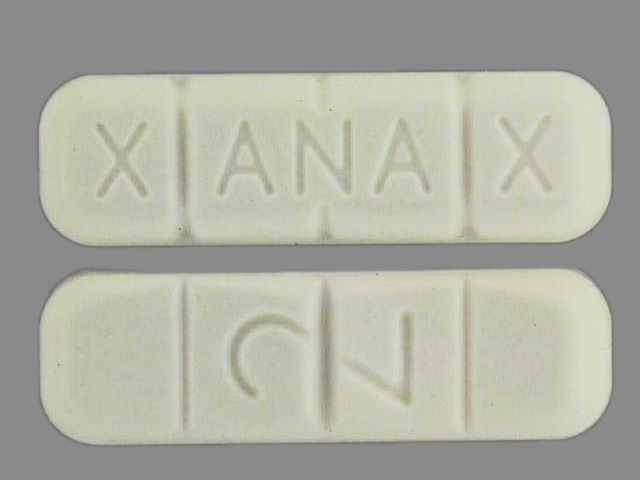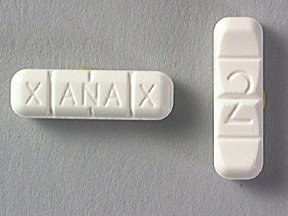Treat Anxiety Naturally Without Side Effects with Nature's Xanax (Video and Recipes)
by N.Morgan

The National Institute of Mental Health says that anxiety disorders are currently the most common mental illness in the U.S., affecting 40 million adults in the United States age 18 and older, or 18% of the population. Furthermore, anxiety disorders cost the U.S. more than $42 billion a year, almost one-third of the country’s $148 billion total mental health bill, according to “The Economic Burden of Anxiety Disorders,” a study commissioned by the Anxiety and Depression Association of America.(1)
How many times have you turned to Xanax in times when you felt anxious? For many people, this has become an everyday option, but many are unaware of the serious short term and long term side effects of Xanax. Benzodiazepines are a common prescription drug used to treat anxiety and depression. Alprazolam (aka Xanax) was number 8 on the list of the most prescribed medications in 2010 according to Data from SDI Health.

What Is Alprazolam (Xanax): The Cost of Calm
In 2011, alprazolam was the most frequently prescribed benzodiazepine—with about 49 million prescriptions written. Alprazolam, like other benzodiazepines, works as an anxiolytic agent (anti-anxiety) by binding to specific sites on GABA receptors in the brain to slow down the heart rate and breathing, leading to a greater sense of relaxation.
As with most pharmaceuticals, alprazolam’s glorified benefits come with a price.

Typical Side Effects of Xanax
- Dyspnea or shortness of breath
- Nausea
- Dry mouth
- Hypersalivation
- Excessive talking
- Decreased motivation
- Anterograde amnesia and concentration problems
- Irritability
- Decreased libido
- Skin rash, respiratory depression, constipation
- Drowsiness, dizziness, lightheadedness, fatigue, unsteadiness and impaired coordination, vertigo

More Serious Side Effects of Xanax
- Difficulty concentrating
- Memory problems
- Confusion
- Slurred speech
- Paranoia
- Depression
- Strange dreams
- Hallucinations
- Seizures
- Suicidal ideation

Long Term Side Effects Of Xanax
One of the most troubling long-term side effects of Xanax use is the high possibility of physical dependence and addiction in a short time of use. It’s sedative effects and feeling of a calm “high” can lead to tolerance developing quickly, especially with persistent use.
Once tolerance begins, this leads the patient to start taking higher and higher doses to get that same calm feeling. This can start a dangerous cycle of compulsive use, and can ultimately result in sedative addiction. Consequently, continually upping the daily dose of alprazolam also increases the risk of overdose.
According to the Drug Enforcement Administration (2):
- More than 20 million people over the age of 12 have reported misuse of benzodiazepines at some point in their lives.
- There were almost 350,000 emergency room visits related to benzodiazepines in 2010; alprazolam accounted for more than a third of these.
A Natural Alternative To Xanax: L-theanine
L-theanine is a potent amino acid that’s primarily found in teas made from the Camellia sinensis plant. L-theanine acts as a relaxing agent or anxiolytic without sedative effects or any of the negative side effects of Xanax. L-theanine works somewhat similarly to Xanax by interacting with brain receptors and increasing dopamine, GABA, and glycine levels in various areas of the brain (3, 4).
This, in turn, calms the central nervous system, produces a sense of calm and also reduces the perception of stress. L-theanine has also shown to promote increased alpha-waves in the brain which signify an alert but relaxed brain. (5, 6)
An Australian study in 2004 used 16 volunteers and compared 200mg of theanine to 1mg of Xanax. Subjects were given either theanine, Xanax or a placebo during either a resting task (baseline) or a task that provoked anxiety. Theanine worked better than Xanax to induce relaxation during the resting task, however, neither L-theanine or alprazolam demonstrated any acute anxiolytic effects during the anxiety task. (7)
Taking L-theanine: Tea vs. Supplements
You have two top options to start increasing your intake of L-theanine; concentrated doses through supplementation and/or lower concentrations in brewed tea.

Supplements/Capsules:
- L-theanine supplements are typically sold as 200mg doses which are equivalent to 8-10 cups of brewed black tea.
- The recommended dose is of 100 – 200mg 1-3 times per day for therapeutic benefits
- Supplements I recommend include AOR’s Zen Theanine and Thorne’s Theanine

Tea:
- Black tea: A typical 200ml cup of brewed black tea contained approximately 25mg of L-theanine
- Green tea: An average cup of brewed green tea contained approximately 8mg of L-theanine
- Matcha green tea powder: For the most bang for your buck I personally love a decent-sized serving of organic stone-ground matcha every morning which offers around 29mg of L-theanine per 2g of matcha with the added punch of antioxidant goodness.
Brewing Tips:
According to researchers from The University of Newcastle in Australia, to get the highest possible amount of L-theanine out of each cup follow these instructions (8):
- Steep tea at 80 degrees Celsius for 30 minutes
- Use water to tea ratio of 20 ml per 1 gram
- Steep tea that is between 0.5 and 1 mm in particle size!
We have an affiliate program designed for content creators and affiliate marketers, who would like to sell this product, please click here for affiliate program details. Our affiliate program is designed to help you monetize your screen time.

References:
.png)

Comments
Post a Comment